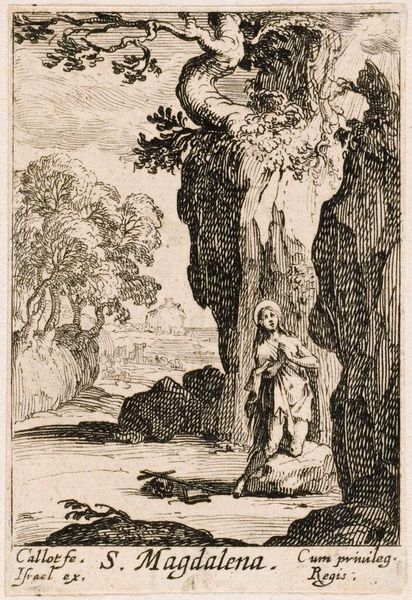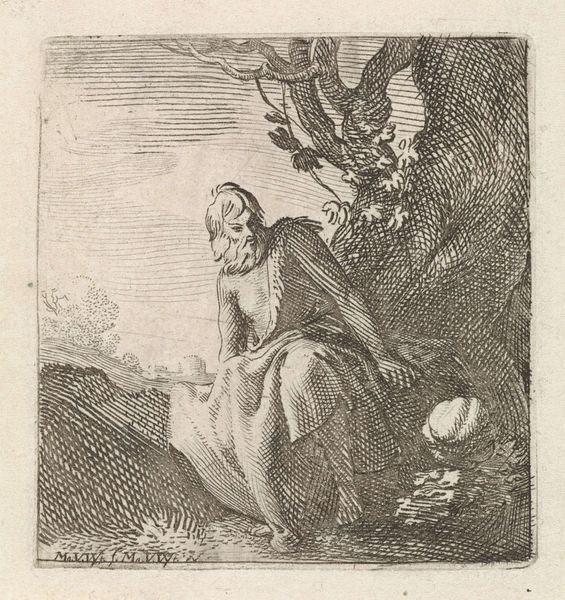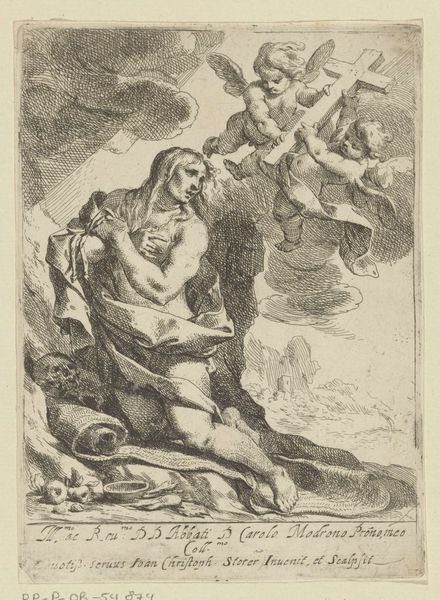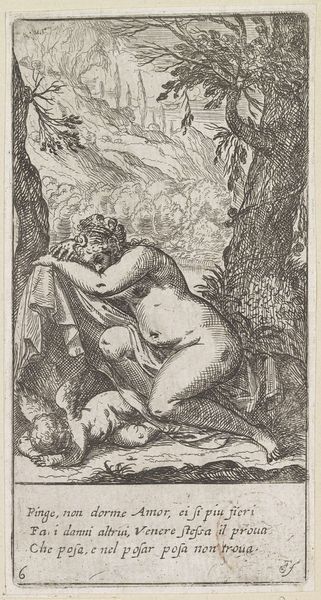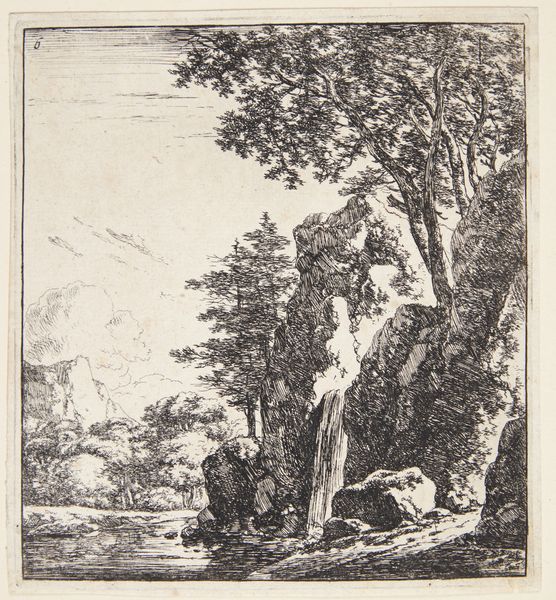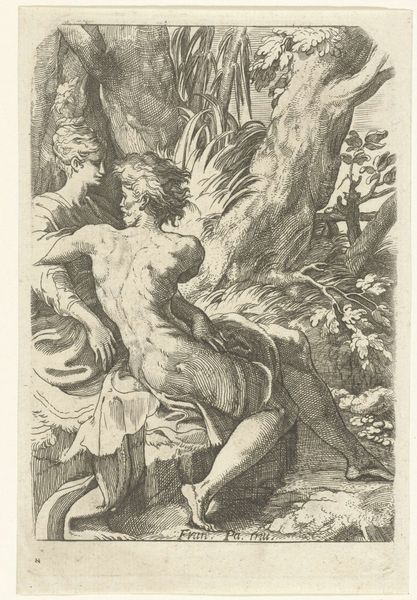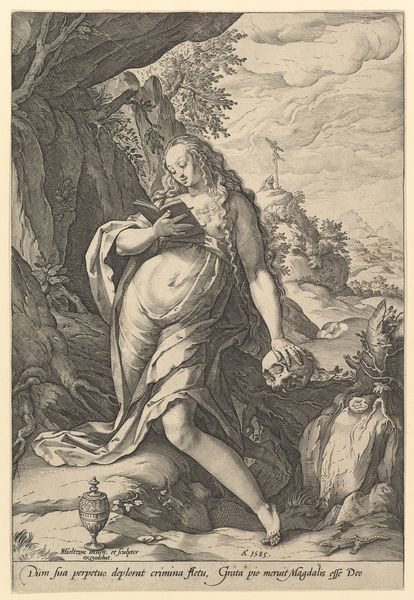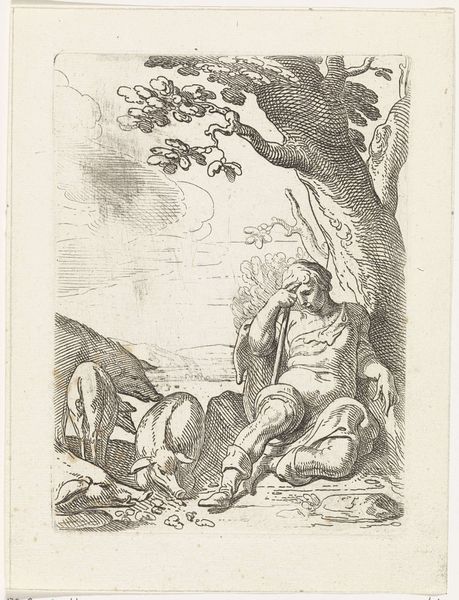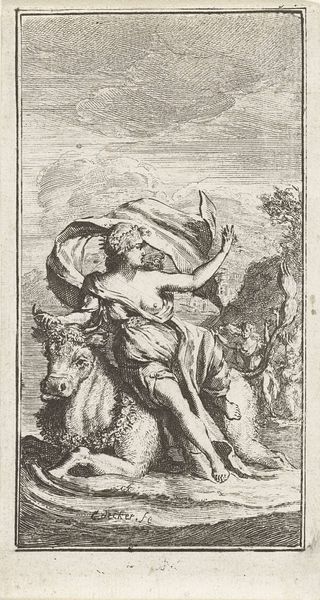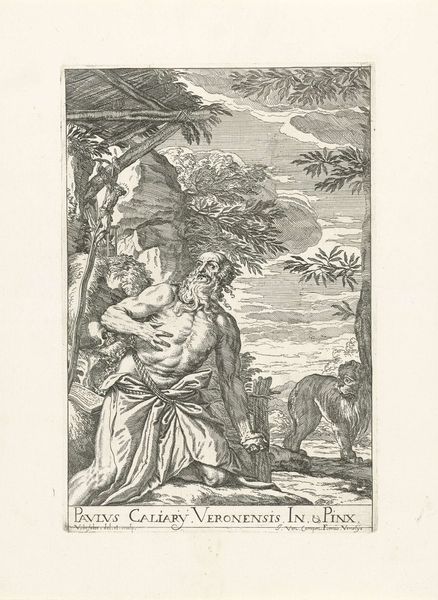
print, engraving
#
baroque
#
pen drawing
# print
#
old engraving style
#
landscape
#
figuration
#
line
#
history-painting
#
engraving
Dimensions: height 71 mm, width 55 mm
Copyright: Rijks Museum: Open Domain
This engraving, made in 1717 by Bernard Picart, depicts a man ascending a steep mountain, a tree atop its peak. This image is more than a simple depiction of physical exertion; it is steeped in symbolic meaning. The act of climbing itself is a potent symbol, echoing the trials and tribulations of life, mirrored in myths of heroes like Hercules. The mountain, a recurring motif throughout art history, represents challenges, spiritual ascent, and the overcoming of earthly obstacles. Think of the Renaissance depictions of the "Ladder of Salvation" in Christian art, which shows a similar ambition. Note the Latin phrase "Nil Volentibus Arduum" inscribed, meaning "Nothing is difficult for those who are willing." This reminds us how motifs transform over time, shaped by cultural shifts. The tree at the summit, often seen as the “axis mundi” or world axis, symbolizes growth, and renewal. It reflects the human longing to connect with something higher, with the divine. It is the artist’s rendering of the deeply embedded psychological drive towards self-improvement.
Comments
No comments
Be the first to comment and join the conversation on the ultimate creative platform.

